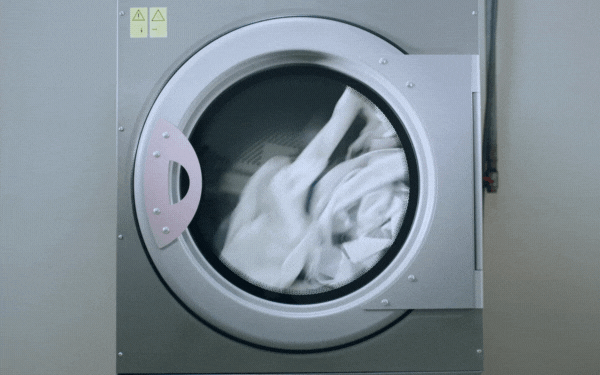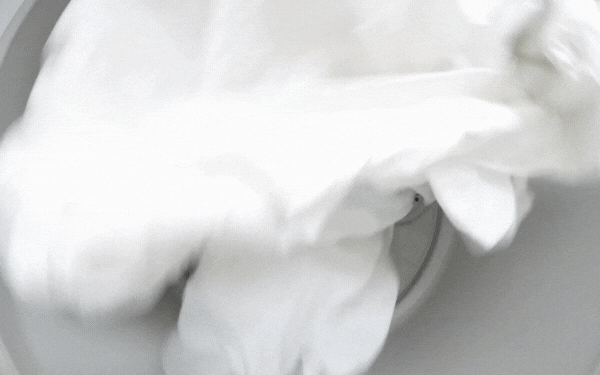Tumble drying is a method of drying clothes that involves placing them in a machine that circulates hot air and tumbling them around. It’s an essential part of modern laundry routines and is preferred by many over line drying due to its convenience and speed. Tumble drying can also help prevent clothes from becoming stiff and wrinkled, making them easier to wear and more comfortable.
However, tumble drying isn’t without its drawbacks. Improper use can lead to shrinkage, damage, and even fires. It’s crucial to understand how to use a tumble dryer safely and effectively, starting with garment care labels.
Understanding Garment Care Labels
Garment care labels are a crucial tool for understanding how to care for your clothes properly. They provide instructions on how to clean and maintain garments, including how to tumble dry them. The symbols on these labels can be confusing, but they’re essential to follow to prevent damage to your clothing.
The Different Types
Most of these dryers have different settings for drying various fabrics and clothing types. Choosing the right setting can help prevent damage, shrinkage, and other issues. The most common settings include low, medium, and high heat, but there are also options for delicate fabrics and specific materials like wool and silk.
How to Properly Prepare Your Clothes

Proper preparation of your clothes before tumble drying is essential for optimal results and preventing damage. The first step is to remove any excess water from the clothes by wringing them out or using a spin cycle on your washing machine. This can help reduce drying time and prevent excess moisture buildup in the dryer.
Next, check the garment care label for specific instructions on how to tumble dry the garment. Some fabrics may require low heat settings or a shorter drying time, while others may not be suitable for tumble drying at all. Always follow the instructions closely to prevent damage to the clothes.
Sorting clothes by fabric type and weight can also help prevent damage and ensure even drying. Lighter fabrics like cotton t-shirts can be tumble-dried together, while heavier fabrics like jeans should be dried separately. Overloading the dryer can lead to uneven drying and potential damage, so it’s essential to load the dryer with the appropriate amount of clothes.
Finally, it’s essential to remove any items from pockets, such as coins or keys, as these can damage the dryer and clothes. Zipping up zippers and fastening buttons can also prevent damage to clothes during the drying process. By properly preparing your clothes for tumble drying, you can ensure optimal results and prolong the lifespan of your clothing.
Tips for Preventing Shrinkage and Damage
Shrinkage and damage are common issues that can occur during tumble drying, but there are several tips and tricks to help prevent them. The first tip is to use lower heat settings when drying clothes. High heat can cause fabrics to shrink or become damaged, so it’s essential to choose the appropriate setting for the fabric type. Delicate fabrics like silk and wool should be dried on low heat or air-dried to prevent damage.
Another tip is to avoid overloading the dryer. Overloading can lead to uneven drying and potential damage, especially to heavier fabrics like jeans. Clothes should be loosely placed in the dryer to allow for proper airflow and even drying.
Removing clothes promptly once the cycle is complete can also help prevent shrinkage and damage. Leaving clothes in the dryer for too long can cause them to overheat and become damaged, especially delicate fabrics.
Using dryer balls or towels can also help prevent damage and reduce drying time by increasing airflow and fluffing the clothes. However, it’s essential to avoid using fabric softener or dryer sheets, as these can leave a residue on clothes and reduce their absorbency.
Checking the garment care label for specific instructions on how to dry the garment can help prevent shrinkage and damage. Some fabrics may require air-drying or low heat settings, while others may not be suitable for tumble drying at all.
How to Properly Load Your Dryer
Loading your tumble dryer correctly is essential for optimal results. Clothes should be loosely placed in the dryer, and items of similar fabrics and weights should be grouped together. Overloading the dryer can lead to uneven drying and potential damage.
When to Avoid Tumble Drying

While tumble drying is suitable for most fabrics and garments, some materials should be avoided due to their sensitivity to heat and tumbling. These include wool, silk, and delicate fabrics like lace and chiffon. Always check the garment care label for specific instructions on how to dry these materials.
Common Mistakes to Avoid
Mistakes can happen when using a tumble dryer, but some are avoidable. Common mistakes include overloading the dryer, using high heat settings, and failing to remove clothes promptly once the cycle is complete. These mistakes can lead to damage, shrinkage, and other issues.
How to Troubleshoot Common Issues
Even with proper preparation and care, issues can arise during tumble drying. These can include clothes becoming tangled or not drying evenly. Understanding how to troubleshoot these issues can help you get the most out of your dryer and prevent damage.
The Benefits and Drawbacks
Tumble drying has several benefits, including convenience, speed, and comfort. However, there are also drawbacks, such as potential damage, energy usage, and environmental impact. It’s essential to weigh the pros and cons of tumble drying and decide if it’s the right choice for you and your clothing.
Alternatives
For delicate fabrics or clothes that cannot be tumble dried, there are alternative methods for drying. These can include line drying, flat drying, or air drying on a rack. These methods may take longer than tumble drying, but they can help prevent damage to delicate fabrics and keep clothes looking new for longer.
How to Maintain and Clean Your Dryer

Proper maintenance and cleaning of your tumble dryer can help prolong its lifespan and ensure optimal performance. Regular cleaning of the lint trap and dryer vent is essential for preventing fires and ensuring proper airflow. It’s also essential to schedule professional maintenance regularly to keep your dryer in top condition.
Understanding the Symbols
Garment care labels feature symbols that indicate how to care for clothing, including how to tumble dry them. Understanding these symbols is essential to prevent damage to clothes and ensure they last longer. The symbols can indicate heat level, tumble dry time, and whether tumble drying is allowed or not.
How to Read Garment Care Labels
Reading garment care labels properly is essential for understanding how to care for your clothes, including how to tumble dry them. The labels may feature symbols or written instructions, and it’s crucial to follow them closely to prevent damage or shrinkage.
FAQs
Can tumble drying damage clothes?
Improper use can lead to shrinkage, damage, and even fires. It’s crucial to understand how to use it safely and effectively to prevent damage to your clothing.
Can I tumble-dry delicate fabrics like silk and wool?
Delicate fabrics like silk and wool should be dried on low heat or air-dried to prevent damage. Always check the garment care label for specific instructions on how to dry these materials.
Can I tumble dry all clothing types?
While most clothing types can, some materials should be avoided due to their sensitivity to heat and tumbling. These include wool, silk, and delicate fabrics like lace and chiffon.
What is the best way to load a tumble dryer?
Clothes should be loosely placed in the dryer, and items of similar fabrics and weights should be grouped together. Overloading the dryer can lead to uneven drying and potential damage.
What is the best way to clean my tumble dryer?
Regular cleaning of the lint trap and dryer vent is essential for preventing fires and ensuring proper airflow. It’s also essential to schedule professional maintenance regularly to keep your dryer in top condition.
Can I use fabric softener or dryer sheets when tumble-drying clothes?
It’s essential to avoid using fabric softener or dryer sheets, as these can leave a residue on clothes and reduce their absorbency. Instead, try using dryer balls or towels to help prevent damage and reduce drying time.
Conclusion

Tumble drying is an essential part of modern laundry routines, but it’s crucial to understand how to use a dryer safely and effectively. Proper preparation, loading, and maintenance can help prevent damage and prolong the lifespan of your dryer and clothing.
Understanding garment care labels and following their instructions closely is also essential for proper tumble drying techniques. With these tips and tricks, you can enjoy the convenience and comfort of tumble drying while keeping your clothes in top condition.

